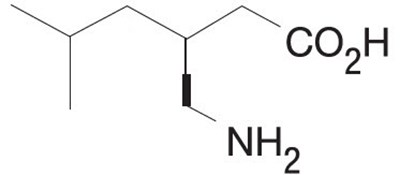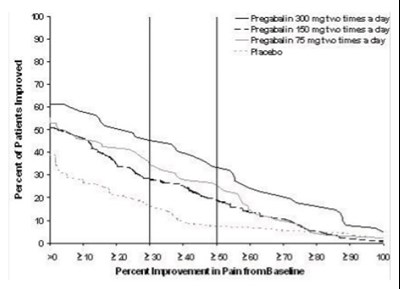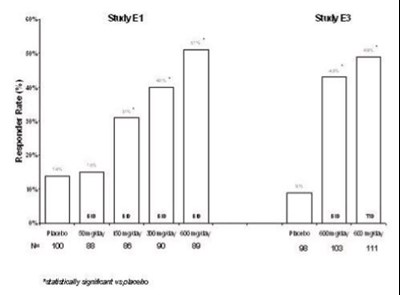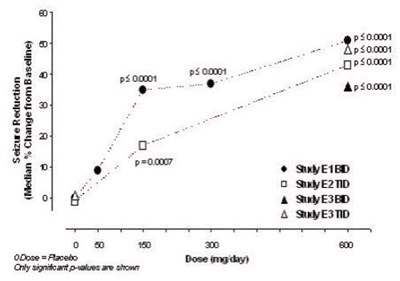Product Images Pregabalin
View Photos of Packaging, Labels & Appearance
- Label - 71610 0931 30
- Aphena - Aphena
- Chemical Structure - pregabalin 01
- Figure 1 - pregabalin 02
- Figure 2 - pregabalin 03
- Figure 3 - pregabalin 04
- Figure 4 - pregabalin 05
- Figure 5 - pregabalin 06
- Figure 6 - pregabalin 07
- Figure 7 - pregabalin 08
- Figure 8 - pregabalin 09
- Figure 9 - pregabalin 10
- Figure 10 - pregabalin 11
- Figure 11 - pregabalin 12
- Figure 12 - pregabalin 13
Product Label Images
The following 15 images provide visual information about the product associated with Pregabalin NDC 71610-931 by Aphena Pharma Solutions - Tennessee, Llc, such as packaging, labeling, and the appearance of the drug itself. This resource could be helpful for medical professionals, pharmacists, and patients seeking to verify medication information and ensure they have the correct product.
Figure 4 - pregabalin 05

This data shows the percentage of patients that experienced improvement in pain based on the administration of Pregabalin at different doses compared to a placebo, over a period of days. The chart displays the impact on pain levels over time.*
Figure 5 - pregabalin 06

This text provides information about the percentage of patients who improved using different dosages of Pregabalin and a placebo. It mentions Pregabalin dosages of 100mg and 80mg three times a day, as well as a placebo. The chart seems to show the percentage of improvement in pain from baseline for each group.*
Figure 8 - pregabalin 09

This text provides information on responder rates for different treatments, including placebo and doses of 2.5 mg/kg/day and 10 mg/kg/day. The responder rate (%) for each treatment is given.*
Figure 9 - pregabalin 10

Percent of Patients Improved: 100 This text provides information about the percent improvement in pain from baseline for different doses of the medication Preguizsin. The values mentioned are for Preguizsin L0 car dose, Pregaoain 4807 car dose, and Pregassin A0mg ea dose. Additionally, there is reference to a placebo group. It appears to be a summary of the improvement in pain experienced by patients after taking these medications compared to their baseline pain levels.*
Figure 11 - pregabalin 12

The provided information shows the percentage of subjects who improved from baseline to week 12 with Pregabalin treatment. The data indicates that between 90% and 100% of subjects experienced improvement during the specified time period.*
* The product label images have been analyzed using a combination of traditional computing and machine learning techniques. It should be noted that the descriptions provided may not be entirely accurate as they are experimental in nature. Use the information in this page at your own discretion and risk.









